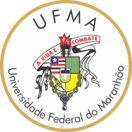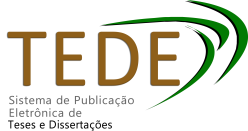| Compartilhamento |


|
Use este identificador para citar ou linkar para este item:
https://tedebc.ufma.br/jspui/handle/tede/5697| Tipo do documento: | Dissertação |
| Título: | INVESTIGAÇÃO DAS PROPRIEDADES FOTOCATALÍTICAS DE HETEROJUNÇÕES TIPO BiOBr/FeW𝐎𝟒 NA DEGRADAÇÃO DE POLUENTES |
| Título(s) alternativo(s): | INVESTIGATION OF THE PHOTOCATALYTIC PROPERTIES OF BiOBr/FeW𝐎𝟒 HETEROJUNCTIONS IN POLLUTANT DEGRADATION |
| Autor: | SILVA, Letícia Maria Brito  |
| Primeiro orientador: | ALMEIDA, Marcio Aurélio Pinheiro |
| Primeiro membro da banca: | ALMEIDA, Marcio Aurélio Pinheiro |
| Segundo membro da banca: | SANTOS, Clenilton Costa dos |
| Terceiro membro da banca: | LUZ JUNIOR, Geraldo Eduardo da |
| Resumo: | Atualmente a poluição dos recursos hídricos é um dos principais problemas ambientais a serem combatidos em diversos países. Dessa forma, os corantes sintéticos produzidos por indústrias têxteis, por exemplo, apresentam-se como um problema devido a sua composição diversificada e de difícil tratamento. Nesse sentido, os semicondutores têm se mostrado uma ótima ferramenta na fotodegradação de contaminantes orgânicos e inorgânicos. Sendo assim, foram sintetizadas heterojunções do tipo BiOBr/FeWO4 nas diversas composições de FeWO4, e investigada as propriedades fotocatalíticas na degradação dos corantes rodamina B e alaranjado de metila. As heterojunções foram caracterizadas por difração de raios x, Espectrosocpia FTIR, Espectrosocpia Raman, Espectroscopia eletrônica de varredura e de transmissão, Espectroscopia dispersiva de raios x, e Espectroscopia de reflectância difusa. O padrão de difração de raios X para BiOBr foi indexado para estrutura tetragonal. Para as heterojunções, além dos picos difratados referente ao BiOBr, picos adicionais foram observados, o que foi atribuído para estrutura monoclínicado FeWO4, o que sugere a existência da estrutura FeWO4 na composição da heterojunção. Os espectros FTIR e Raman mostraram que além dos modos vibracionais referentes à estrutura do BiOBr, outros modos vibracionais foram observados, os quais foram atribuídos para estrutura do FeWO4. As imagens de MEV mostraram para a estrutura BiOBr uma morfologia tipo microflores, enquanto para as heterojunções, foram observadas estruturas na forma de lamelas com pequenas estruturas na superfície, as quais foram atribuídas para FeWO4. Para os estudos das propriedades eletrônicas, foi observada nos espectros de absorção das heterojunções uma maior absorção na região do visível, e valores de band gap semelhantes para todas as estruturas. Para atividade fotocatalítica das heterojunções BiOBr/FeWO4 (5,10,15 e 20%) foi observado uma maior eficiência da atividade fotocatalítica na degradação do corante RhB e alaranjado de metila em comparação ao BiOBr puro, com exceção do BiOBr/FeWO4-20% na degradação do alaranjado de metila que apresentou menor degradação. Os ensaios de sequestradores com álcool iso-propílico, bezoquinona, mostraram a existência das especies oxidativas sendo eles os radicais superóxido e hidroxila, os quais participam diretamente no mecanismo de fotodegradação dos corantes. |
| Abstract: | Currently, the pollution of water resources is one of the main environmental problems to be tackled in several countries. Therefore, synthetic dyes produced by textile industries, for example, present a problem due to their diverse composition and difficult treatment. In this sense, semiconductors have proven to be a great tool in the photodegradation of organic and inorganic contaminants. Therefore, BiOBr/FeWO4 heterojunctions were synthesized in different compositions of FeWO4, and the photocatalytic properties in the degradation of rhodamine B and methyl orange dyes were investigated. The heterojunctions were characterized by x-ray diffraction, FTIR spectroscopy, Raman spectroscopy, scanning and transmission electron spectroscopy, dispersive x-ray spectroscopy, and diffuse reflectance spectroscopy. The X-ray diffraction pattern for BiOBr was indexed to tetragonal structure. For the heterojunctions, in addition to the diffracted peaks referring to BiOBr, additional peaks were observed, which were attributed to the FeWO4 monoclinic structure, which suggests the existence of the FeWO4 structure in the composition of the heterojunction. The FTIR and Raman spectra showed that in addition to the vibrational modes referring to the BiOBr structure, other vibrational modes were observed, which were attributed to the FeWO4 structure. The SEM images showed a microflower-like morphology for the BiOBr structure, while for the heterojunctions, lamella-shaped structures with small structures on the surface were observed, which were attributed to FeWO4. For the studies of electronic properties, a greater absorption in the visible region was observed in the absorption spectra of the heterojunctions, and similar band gap values for all structures. For the photocatalytic activity of BiOBr/FeWO4 (5,10,15 e 20%) heterojunctions, a greater efficiency of the photocatalytic activity was observed in the degradation of the dye RhB and methyl orange compared to pure BiOBr, with the exception of BiOBr/FeWO4-20% in the degradation of methyl orange, which showed lower degradation. Scavenger tests with iso-propyl alcohol, bezoquinone, showed the existence of oxidative species, namely superoxide and hydroxyl radicals, which directly participate in the photodegradation mechanism of dyes. |
| Palavras-chave: | Fotodegradação; Heterojunção; Propriedades fotocatalíticas photodegradation; heterojunction; photocatalytic properties |
| Área(s) do CNPq: | Ecologia Aplicada |
| Idioma: | por |
| País: | Brasil |
| Instituição: | Universidade Federal do Maranhão |
| Sigla da instituição: | UFMA |
| Departamento: | COORDENAÇÃO DO CURSO DE CIÊNCIA E TECNOLOGIA/CCET |
| Programa: | PROGRAMA DE PÓS-GRADUAÇÃO EM CIÊNCIA DOS MATERIAIS/CCSST |
| Citação: | SILVA, Letícia Maria Brito. Investigação das propriedades fotocatalíticas de heterojunções tipo BIOBR/FEW𝐎𝟒 na degradação de poluentes. 2023. 66 f. Dissertação( Programa de Pós-graduação em Ciência dos Materiais/CCSST) - Universidade Federal do Maranhão, São Luís, 2023. |
| Tipo de acesso: | Acesso Aberto |
| URI: | https://tedebc.ufma.br/jspui/handle/tede/5697 |
| Data de defesa: | 20-Set-2023 |
| Aparece nas coleções: | DISSERTAÇÃO DE MESTRADO - PROGRAMA DE PÓS-GRADUAÇÃO EM CIÊNCIA DOS MATERIAIS/CCSST |
Arquivos associados a este item:
| Arquivo | Descrição | Tamanho | Formato | |
|---|---|---|---|---|
| LETÍCIA MARIA BRITO SILVA.pdf | Dissertação de Mestrado | 2,53 MB | Adobe PDF | Baixar/Abrir Pré-Visualizar |
Os itens no repositório estão protegidos por copyright, com todos os direitos reservados, salvo quando é indicado o contrário.




